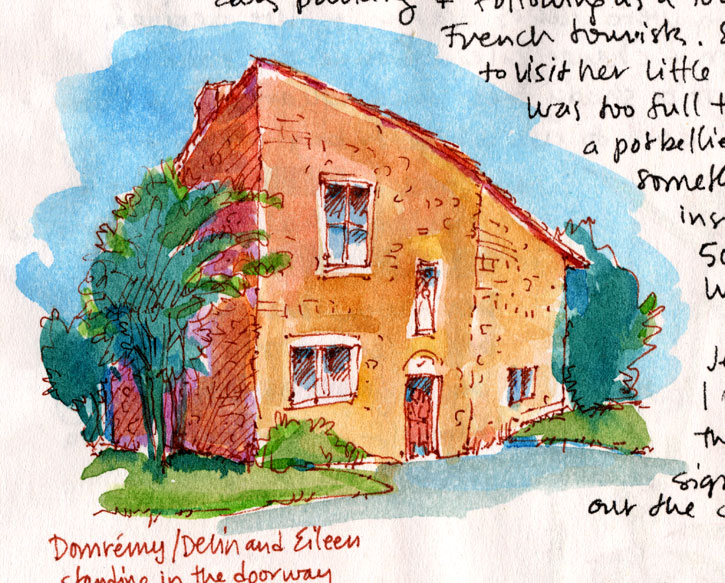No one really knows precisely when Joan of Arc was born. But January 6, 1412 is traditionally recognized as the date, making today the 500th anniversary of her birth, the quincentennial celebration of her mysterious, heroic, and too-short life.
The outlines of the story are generally recognized: A pious girl from a rural family, in response to visions and voices she explained as those of saints and angels, approached the Dauphin, the future Charles VII, during the Hundred Years’ War, and convinced him to allow her to aid France.
Given a suit of armor and a banner with fleur-de-lis, she led newly-inspired French troops (who had formerly declined to follow the feckless and irresolute Charles into battle) to expel the English and Burgundians from her then-small country. Her successes in battle, and in eventually arranging for the coronation of the Dauphin in Reims, greatly encouraged the French, but alarmed the Burgundians and infuriated the English, who, when they finally had Joan in custody, burned her at the stake as heretic and witch and raked her ashes into the Seine to prevent the collection of relics—an indication of awareness that they had murdered an innocent. She was nineteen. Detailed records of her trial, painstakingly kept by the court, reveal to us Joan’s simplicity and humility, in contrast to the narrow-minded and vengeful scheming of her assorted judges.
These same records were made use of to acquit her posthumously later under Charles’ rule—for him it was politically expedient to have been crowned with the aid of a courageous maiden instead of a condemned witch. During the acquittal process the testimony of numerous witnesses reveals the original trial’s illegal and corrupt maneuverings.
How was an untrained teenage country girl able to lead dispirited soldiers in the wake of a string of defeats (notably Agincourt in 1415) to win a series of battles and break through enemy lines to see her king crowned? What was the nature of Joan’s voices? To this day much of her story remains unknown and a subject of speculation for historians, psychotherapists, artists, novelists, playwrights, and filmmakers. Statues of Joan are to be found all over the world, including here in Washington, DC, a gift from the Ladies of France in Exile in New York in 1922 and the only equestrian statue of a woman in the city. (There are actually only a handful of equestrian statues of women to be found anywhere, and probably more of Joan of Arc than any other.) As of 1920, Joan became—after five hundred years (the Catholic church moving with its customary excruciating slowness)—Saint Joan.
The image of Jeanne d’Arc has been co-opted, ironically, by the French extreme right, who more properly ought to take as their symbol a 15th-century right-winger: the manipulative and self-absorbed Duke of Burgundy, who turned Joan over to the English to maintain his power; the misogynist cleric Pierre Cauchon, who was fixated on Joan’s wearing of male attire; or the avaricious English themselves, whose desire for the French throne had been humiliatingly waylaid by an upstart female. The ultra-conservative Front National is no place for unconventional Joan, who defied societal expectations, suffered in battle and in prison, and died for her efforts.
The sketch is from a visit to the house in Domrémy thought to have belonged to Joan’s family.
Today is also the Feast of the Epiphany, the day on which, according to tradition, three wise men from the East carried gifts to the infant Jesus. For another take on this event, please see The Three Wise Women.
The Feast of the Epiphany is also the birthday of Carl Sandburg (1878-1967). For a comic and a poem, please see Poetic Journey of the Magi.


